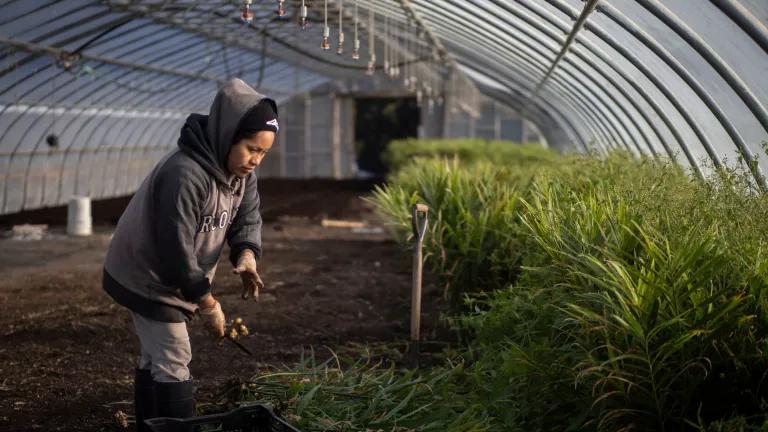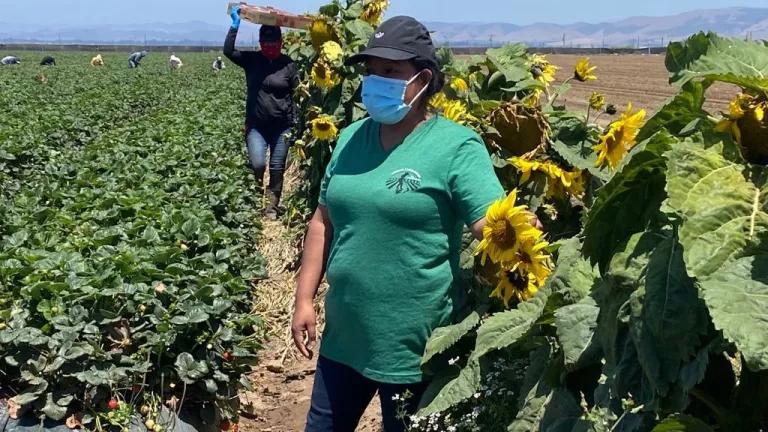Court Sides with Science, Children’s Health on Chlorpyrifos

The ruling orders a ban of the widely used, toxic pesticide.
After decades of advocacy and thousands of scientific studies, chlorpyrifos—a pesticide widely used on fruits and vegetables—may finally be headed to the history books. Yesterday, the 9th Circuit Court of Appeals ruled that the U.S. Environmental Protection Agency (EPA) must finalize its proposed ban on chlorpyrifos—a pesticide linked to learning disabilities in children—within 60 days.
The ruling comes in a lawsuit brought by a coalition of labor and health organizations, including NRDC, represented by Earthjustice and joined by 8 state Attorneys General. The decision can be found here.
This decision supports the efforts of pediatricians, public health experts, and farmworker advocates to protect children from a chemical found to contaminate the food supply, drinking water, and the air in agricultural communities. Significant science—including from EPA itself—shows that exposure to low levels of the pesticide in early life can lead to increased risk of learning disabilities, including reductions in IQ, developmental delay and ADHD. Farmworkers—many of whom are Latinx—and their children face additional, disproportionate risk because the chemical is used so close to where they live, work, and go to school—resulting in exposures from air, drinking water, and dust in their homes.
In a 2-1 decision, the Court made three important findings:
- The Court could, and needed to, step-in because EPA was evading its responsibility to protect children from exposure to a dangerous pesticide.
- EPA could not delay action to protect children any longer.
- Since EPA has not shown that chlorpyrifos can be used safely on food, it must enact the ban proposed in 2016.
The Court then directed EPA to “revoke all tolerances and cancel all registrations for chlorpyrifos within 60 days”—which would effectively ban the use of chlorpyrifos in the US and prohibit chlorpyrifos residues on all food sold here.
The Court decision comes on the heels of Congressional efforts to force a ban and state-level efforts to protect their communities. In June, Hawaii became the first state to ban chlorpyrifos and last week, Agency scientists in California finalized a report that found chlorpyrifos use poses unacceptable risks to infants, children, and pregnant women. California’s independent evaluation echoed EPA’s earlier findings: exposure to chlorpyrifos in food, water, and air threatens children’s brain development, especially in California’s farming communities.
Environmentalists, farmworkers, and other public health organizations are calling on Governor Brown and the California Department of Pesticide Regulation to use California’s independent authority to ensure that communities get the protections promised in the Court decision. California uses more chlorpyrifos than any other state in the nation—close to 1 million pounds per year on about 80 crops, including healthy favorites like citrus, nuts, berries, and broccoli. Given EPA’s history of foot-dragging on this issue, the state must be prepared to protect communities.
NRDC will keep fighting alongside communities and public health experts to protect kids over industry profits. As Angel Garcia, Chair of the Tulare County Coalition Advocating for Pesticide Safety said in a statement, “Every day that this pesticide is used puts another family’s child at risk of permanent brain damage and lowered IQ. If the officials who made these decisions lived where we live, they would have already taken action.”



